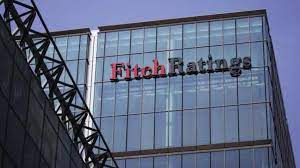Singapore February 7 2025: Pakistan has continued to make headway restoring economic stability and rebuilding external buffers, says Fitch Ratings. Progress on difficult structural reforms will be key to upcoming IMF programme reviews and continued financing from other multilateral and bilateral lenders.
The State Bank of Pakistan’s decision to cut policy rates to 12% on 27 January underscored recent progress in taming consumer price inflation, which fell to just over 2% yoy in January 2025, down from an average of nearly 24% in the fiscal year ended June 2024 (FY24). Rapid disinflation reflects fading base effects from earlier subsidy reforms and exchange rate stability, underpinned by a tight monetary policy stance, which in turn has subdued domestic demand and external financing needs.
Economic activity, having absorbed tighter policy settings, is now benefitting from stability and falling interest rates. We expect real value added to expand by 3.0% in FY25. Growth in credit to the private sector turned positive in real terms in October 2024 for the first time since June 2022.
Strong remittance inflows, robust agricultural exports and tight policy settings have allowed Pakistan’s current account to move into a surplus of about USD1.2 billion (over 0.5% of GDP) in the six months to December 2024, from a similarly sized deficit in FY24. Foreign exchange market reforms in 2023 also facilitated the shift. When upgrading Pakistan’s rating to ‘CCC+’ in July 2024, we expected a slight widening of the current-account deficit in FY25.
Foreign reserves are set to outperform targets under Pakistan’s USD7 billion IMF Extended Fund Facility (EFF) and Fitch’s earlier forecasts. Gross official reserves reached over USD18.3 billion by end-2024, about three months of current external payments, up from around USD15.5 billion in June.
Reserves remain low relative to funding needs. Over USD22 billion of public external debt matures in the whole of FY25. This includes nearly USD13 billion in bilateral deposits, which we believe bilateral partners will roll over, as per their promises to the IMF. Saudi Arabia rolled over USD3 billion in December, and the UAE USD2 billion in January.
As we noted in recent research, we expect new bilateral capital flows to be increasingly commercial, and conditional on reforms. Discussions on the partial sale of the government’s stake in a copper mine to a Saudi investor exemplify such commercial flows. Pakistan and Saudi Arabia also recently agreed on a deferred oil payment facility.
Securing sufficient external financing remains a challenge, considering large maturities and lenders’ existing exposures. The authorities budgeted for about USD6 billion of funding from multilaterals, including the IMF, in FY25, but about USD4 billion of this will effectively refinance existing debt. A recently announced USD20 billion 10-year framework with the World Bank Group appears broadly in line with this. The group’s current project portfolio is about USD17 billion, and its net new yearly lending to Pakistan averaged around USD1 billion over the past five years.
There has been progress on fiscal reform, despite some setbacks. The primary fiscal surplus has outperformed IMF targets, although federal tax revenue grew less than required under the IMF’s indicative performance criterion in the first six months of FY25. All provinces have recently legislated higher agricultural income taxes, a key structural condition of the EFF, although delays mean that the programme’s January 2025 implementation deadline for the reform was missed.
In July, we noted that positive rating action could be driven by a sustained recovery in reserves and further significant easing of external financing risks, and/or implementation of fiscal consolidation in line with IMF commitments. Meanwhile, deteriorating external liquidity, for example linked to delays in IMF reviews, could lead to negative action.












